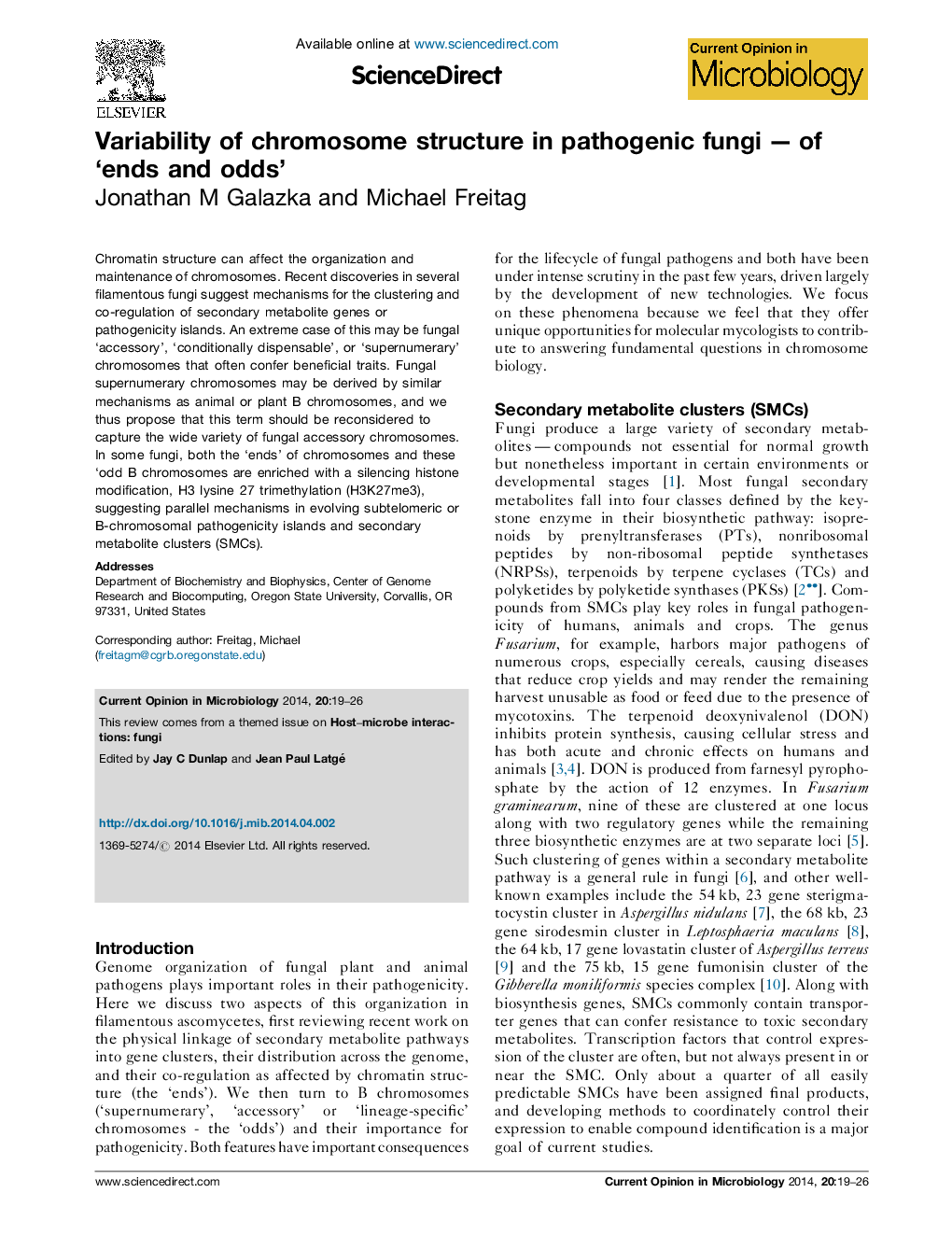| Article ID | Journal | Published Year | Pages | File Type |
|---|---|---|---|---|
| 6131848 | Current Opinion in Microbiology | 2014 | 8 Pages |
Abstract
Chromatin structure can affect the organization and maintenance of chromosomes. Recent discoveries in several filamentous fungi suggest mechanisms for the clustering and co-regulation of secondary metabolite genes or pathogenicity islands. An extreme case of this may be fungal 'accessory', 'conditionally dispensable', or 'supernumerary' chromosomes that often confer beneficial traits. Fungal supernumerary chromosomes may be derived by similar mechanisms as animal or plant B chromosomes, and we thus propose that this term should be reconsidered to capture the wide variety of fungal accessory chromosomes. In some fungi, both the 'ends' of chromosomes and these 'odd B chromosomes are enriched with a silencing histone modification, H3 lysine 27 trimethylation (H3K27me3), suggesting parallel mechanisms in evolving subtelomeric or B-chromosomal pathogenicity islands and secondary metabolite clusters (SMCs).
Related Topics
Life Sciences
Immunology and Microbiology
Microbiology
Authors
Jonathan M Galazka, Michael Freitag,
